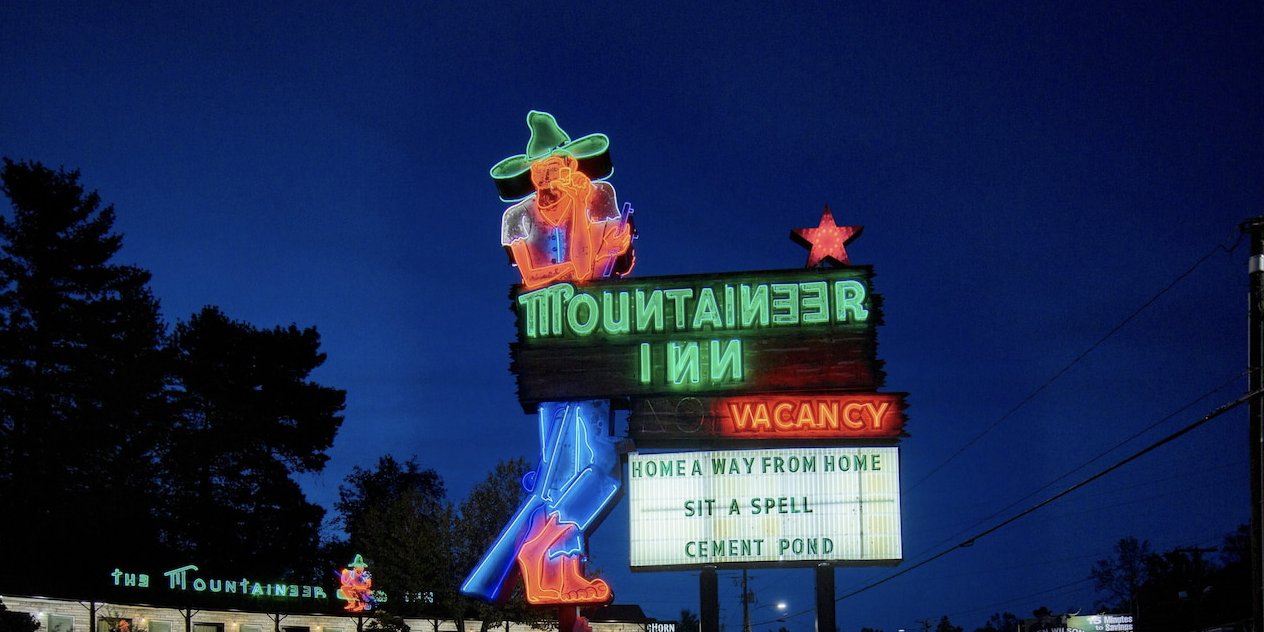Hilarious Yellow Roadside Signs Are a Special Part of Idaho’s History
eBay/purplesorko
From 107.9 LiteFM: There’s no doubt about it. Idaho is a state full of exciting history, fascinating places and fun things to do, but even the proudest Idahoans will agree that driving east on I-84 from Boise can get rather monotonous.
We just made that drive last week as we headed to FanX, a big comic convention in Salt Lake City. The drive itself was an utter bore. Since we made the drive at night, we didn’t get to enjoy views of the wide-open skies or scratch our heads over the three mysterious waterslides along I-84 near Heyburn. It was just dark nothingness until we hit a maze of orange cones where they were paving the interstate in Utah.
The Rust Belt Mallwalker
Jessica Anshutz, the Rust Belt Mallwalker, at Cincinnati Mills mall in 2022
From Docomomo: Jessica Anshutz, aka the “Rustbelt Mallwalker” explains what draws her to malls and shares a visual essay of malls she has documented since 2016.
In 2016, I started taking pictures of malls. I picked up my camera after a long hiatus, and started editing and sharing at least one photo a day, to build a photography habit.
I grew up in the nineties, so the mall was always a place of comfort and wonder for me. We spent a lot of time wandering the halls of Rolling Acres Mall in Akron, Ohio, where I also had my first job. By 2016, Rolling Acres had been sitting empty for a long time, and the “dead mall” thing really never resonated with me. So, I started traveling around the Rust Belt, seeing malls in various states of decline and closure. I also tend to visit properties more than once, to keep track of the changes, as well as take some last photos before the mall closes.
On the curious and enduring appeal of Waffle House
Alamy
From The Economist: Pull off an interstate before dawn in the American South and, outside city centres, you enter a shuttered, ghostly world: darkened businesses, petrol stations devoid of cars, traffic lights flashing red and yellow over empty junctions. But if you are lucky, you may spot a beacon: “WAFFLE HOUSE” spelled out on giant yellow tiles that tower above the restaurant of that name. It will be warmly lit and, more important, open.
The first Waffle House opened just outside Atlanta in 1955. Today there are around 2,000 of them in America, mostly in the South. They are so averse to closing that the former head of the federal emergency-response agency came up with a “Waffle House Index”: if he arrived in an area that had been hit by a storm and found the local outlet shut, he knew he was dealing with a severe natural disaster. This perpetual welcome is only one reason for the affection that Waffle House—on its face, an unremarkable chain of cheap diners—inspires in devotees.
Ghost Signs of Philadelphia: Odds and Ends in Old City
A ghost sign for Charles E. Brown & Co. in the entryway of 313-315 Vine Street. Photo: Jordan Keiffer
From Hidden City: Old City is a mecca for those looking to find unique ghost signs. The 300 block of Vine Street features half a dozen signs–from the extremely faded to the faithfully repainted–transporting observant history buffs back to the heyday of hand-painted advertisements.
Charles E. Brown & Co. at 313-315 Vine Street knew how to make its name known. Many of the company’s signs still adorn the five-story brick factory today. Three of some of the best-preserved wooden ghost signs in Philadelphia can be found under the building’s protected entrance.
Signs of the Times: Investigating the Ghost Signs That Haunt Bellingham
The Hotel Laube sign once advertised its “European Plan” as including “Steam Heat,” “Electric Bells,” and “Public and Private Baths.” The hotel featured ornate woodwork, Persian and Asian velvet carpets, and a café seating 80 people. Photo credit: Anna Diehl
From WhatCom Talk: Walking through downtown Bellingham and Fairhaven, visitors can catch glimpses of the past. “Old Town” Bellingham is the haunt of numerous ghost signs: faded signage and advertisements that are withstanding the test of time.
In the late-nineteenth through mid-twentieth centuries, business owners and advertisers painted logos on brick buildings and barns throughout the country. Many used lead paints, which have survived the elements long after their regulation.
Neon is making a comeback. Here’s why.
A neon sign from the 1930s advertises the Mountaineer Inn in Asheville, North Carolina. Photograph By Carol M. Highsmith, Library Of Congress
From National Geographic: In the first half of the 20th century, neon hummed and flickered across the United States, decorating billboards in New York City’s Times Square, on New Mexico motor inns along Route 66, and at casinos on the Las Vegas Strip.
Yet, even by the 1950s and 1960s, neon was considered “grandpa’s technology,” says J. Eric Lynxwiler, president of the board at the Museum of Neon Art in Los Angeles. Soon enough, billboards were scrapped or neglected across the country, and many areas banned neon, calling it trashy or energy hogging (even though such lights are relatively energy efficient).
Now there’s a revival of interest and enthusiasm for the science-driven art, with museums, neon parks, and preservation efforts popping up around the country. Young artists, drawn to neon’s handmade, hard-to-replicate glow, are learning the craft.








